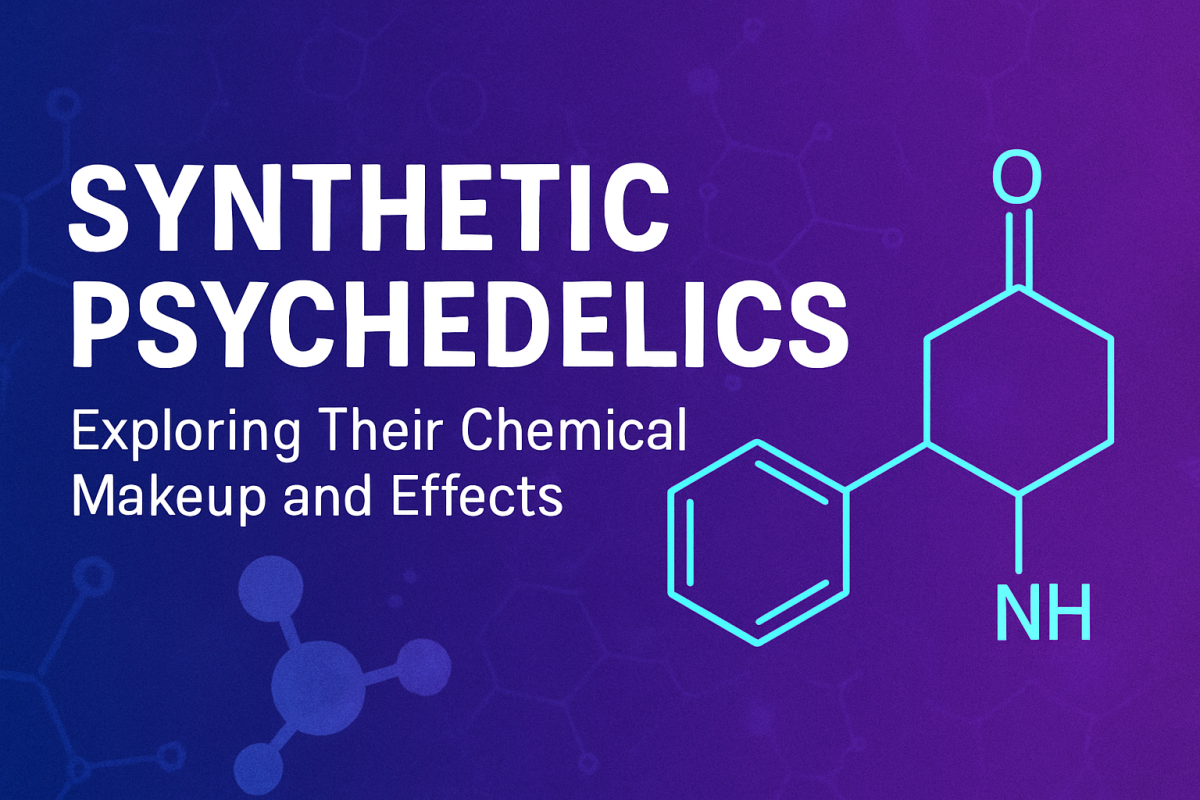Chemicals
Synthetic Psychedelics: Exploring Their Chemical Makeup and Effects
Synthetic psychedelics are among the most intriguing substances studied in modern pharmacology and neuroscience. Created through deliberate chemical synthesis, these compounds mimic or modify the effects of naturally occurring psychedelics like psilocybin, mescaline, or DMT. Scientists and researchers examine them to better understand the brain, consciousness, and potential new therapies for mental health disorders.
What Are Synthetic Psychedelics?
Synthetic psychedelics are human-made compounds designed to interact with the brain’s neuroreceptor systems—most often serotonin receptors. They are typically derived from or inspired by natural psychedelic compounds but modified to alter potency, duration, or effect profile. Common families include:
- Tryptamines – e.g., 4-AcO-DMT, 5-MeO-DMT.
- Phenethylamines – e.g., 2C-B, mescaline analogs.
- Lysergamides – e.g., LSD, AL-LAD.
These molecular variations allow researchers to explore how even slight changes in chemical structure can dramatically influence psychoactive properties.
Chemical Makeup and Structure
The foundation of synthetic psychedelics lies in organic chemistry. Most contain:
- An indole ring (in tryptamines and lysergamides) or a phenethyl backbone (in phenethylamines).
- Substitutions on the ring or side chains that influence receptor binding.
- Functional groups that modify solubility, stability, and metabolic breakdown.
For example, the addition of an acetoxy group in 4-AcO-DMT creates a prodrug that is metabolized into psilocin in the body, producing effects similar to natural psilocybin mushrooms.
How Synthetic Psychedelics Work in the Brain
Most synthetic psychedelics act as serotonin receptor agonists, especially at the 5-HT2A receptor. This interaction changes how neurons communicate, leading to alterations in:
- Perception (visual and auditory distortions)
- Emotion (enhanced empathy or euphoria)
- Cognition (intensified introspection, unusual thought patterns)
Neuroimaging studies reveal that psychedelics can cause a temporary reduction in default mode network activity, which may explain experiences of “ego dissolution” or altered sense of self.
Potential Benefits Under Study
While many synthetic psychedelics are controlled substances, their potential for research is growing:
- Treatment-Resistant Depression – Some compounds show promise in rapidly reducing depressive symptoms.
- PTSD and Anxiety Disorders – Psychedelics may help patients process trauma in therapeutic settings.
- Addiction Therapy – Studies suggest certain psychedelics can help reduce dependency on alcohol, nicotine, or opioids.
- Cluster Headaches – Anecdotal and early clinical evidence points to relief in otherwise treatment-resistant cases.
Risks and Safety Considerations
Despite potential benefits, synthetic psychedelics require cautious handling in research:
- Overdose potential – Some analogs are far more potent than their natural counterparts.
- Psychological effects – Possible anxiety, paranoia, or psychotic episodes in vulnerable individuals.
- Physiological risks – Elevated blood pressure, heart rate changes, and nausea may occur.
- Purity concerns – Unregulated sources can lead to contamination or mislabeling.
For these reasons, researchers follow strict safety protocols and often use analytical methods like GC-MS or HPLC to confirm purity before experiments.
Legal and Ethical Framework
In most jurisdictions, synthetic psychedelics are regulated under controlled substances laws. Researchers require special licenses and ethical approvals to work with them. This oversight ensures:
- Participant safety in clinical trials.
- Compliance with national and international law.
- Accurate record-keeping to track substance usage.
The Future of Synthetic Psychedelic Research
Advances in chemistry and neuropharmacology are paving the way for “next-generation” psychedelics designed with therapeutic precision. Scientists are exploring:
- Non-hallucinogenic analogs that retain antidepressant properties.
- Short-acting psychedelics for use in outpatient therapy.
- Custom-tailored receptor activity for specific mental health needs.
By creating molecules with targeted effects and shorter durations, researchers hope to make psychedelic-assisted therapy more accessible and manageable.
Conclusion
Synthetic psychedelics represent a frontier where chemistry meets neuroscience. Their chemical diversity offers unique opportunities to explore the mind, develop novel treatments, and deepen our understanding of consciousness. However, with great potential comes a responsibility for safe, ethical, and controlled research.
At Momarchem, we are committed to supporting legitimate scientific exploration by supplying research-grade synthetic psychedelics that meet rigorous quality standards. Through our dedication to purity and compliance, we help researchers push the boundaries of human knowledge—responsibly and safely.

